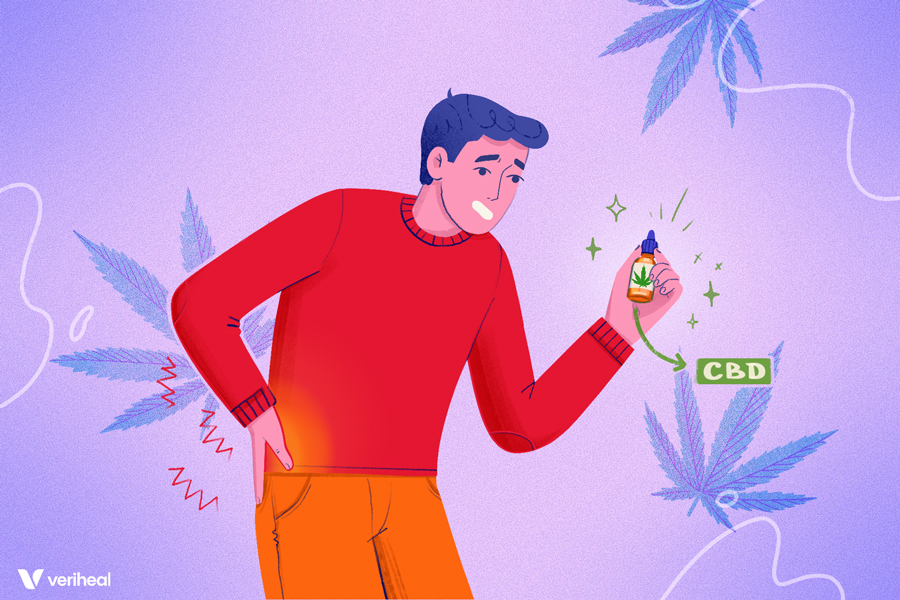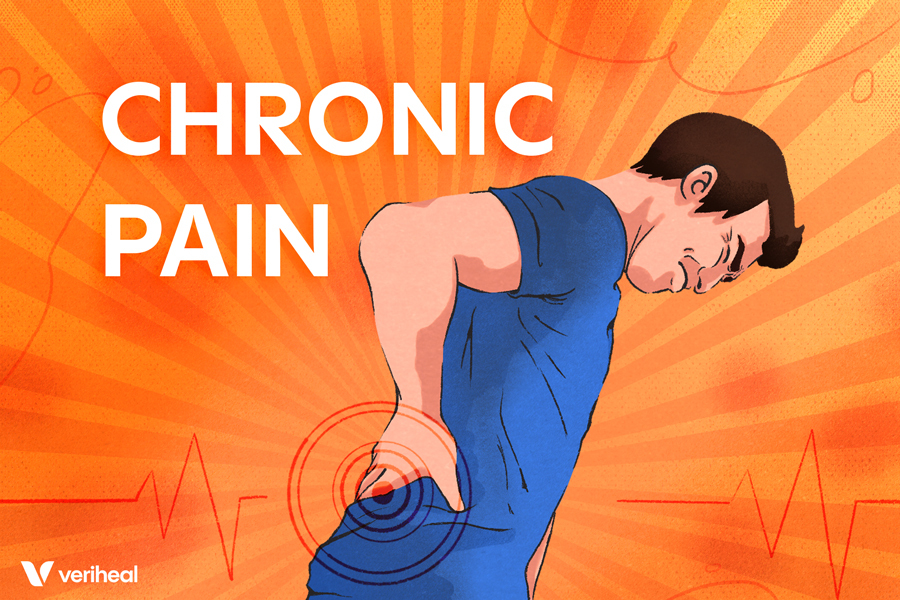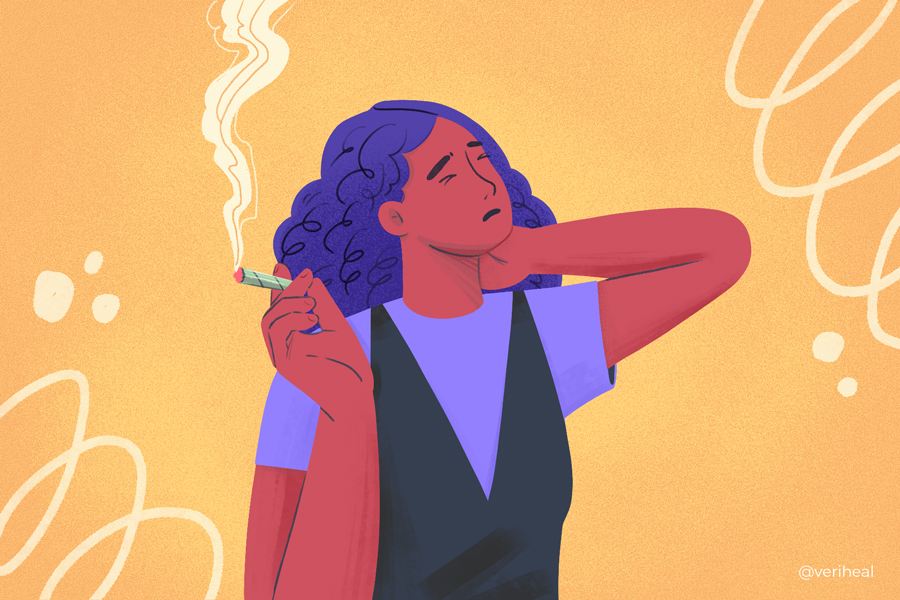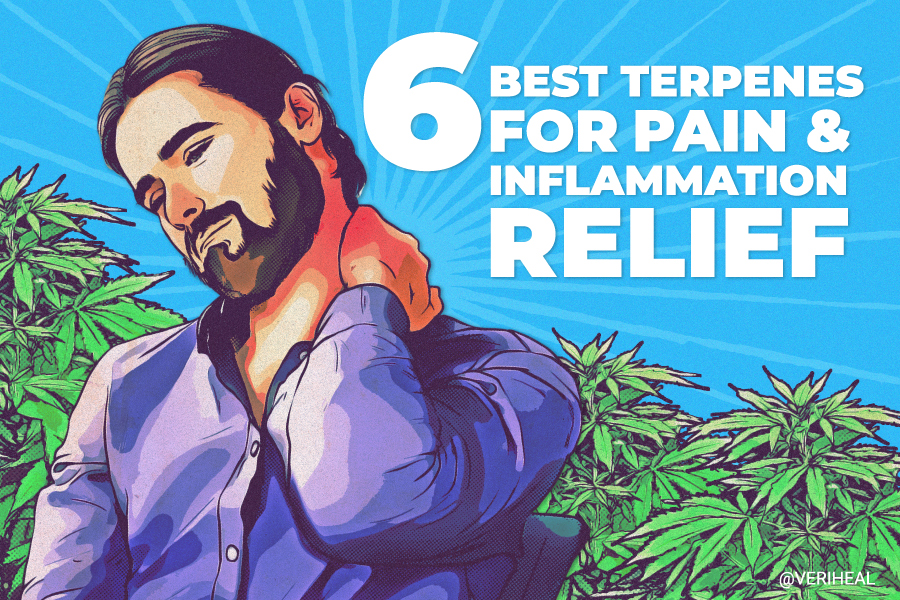Tendinitis: Can Medical Marijuana Help?
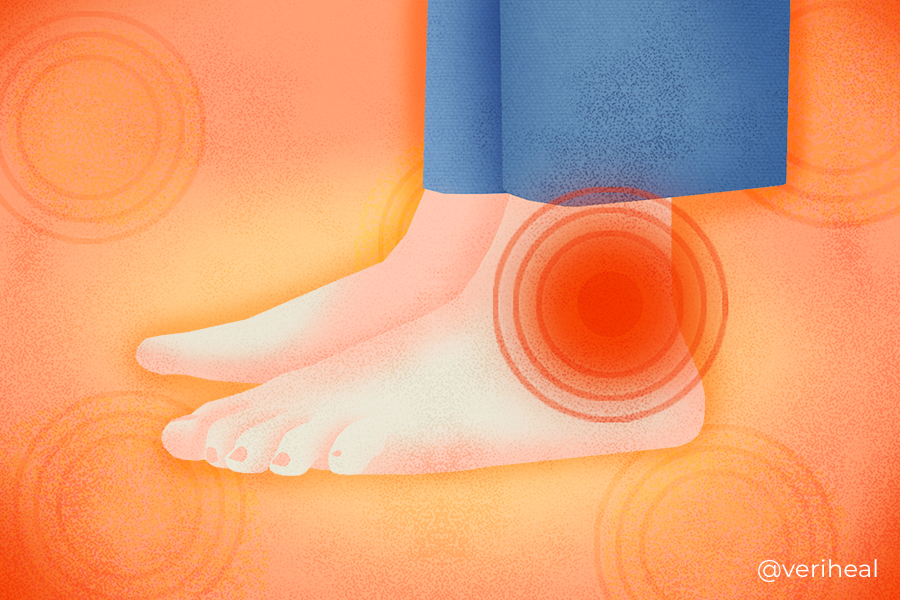
Tendinitis is inflammation of any tendon, the thick fibrous cords that attach muscle to bone. Research shows that medical patients can use cannabis for acute and chronic pain as well as inflammation. As such, doctors may prescribe medical cannabis for tendinitis.
Tendinitis is a painful condition that can make moving the affected joint difficult. This condition also causes the affected tendon to be tender and painful to the touch. Thankfully, medical cannabis can help ease this pain, despite the lack of research regarding tendinitis specifically.
The cannabis plant contains over 120 naturally occurring compounds called cannabinoids. The most widely used cannabinoids include Δ9-tetrahydrocannabinol (THC) and cannabidiol (CBD). When patients consume medical cannabis–using an edible, cream, or raw flower for smoking and vaping–it interacts with the endocannabinoid system (ECS) and the endocannabinoidome (eCBome), lessening pain and treating inflammation.
Receptors in the ECS activate fatty-based neurotransmitters in the body called endocannabinoids. Endocannabinoids are responsible for helping our body with a variety of processes, including maintaining the immune system, slowing inflammation, and maintaining homeostasis. It also plays a role in how patients perceive pain.
Medical Cannabis for Tendinitis Pain
Medical cannabis can be an effective treatment for several different types of pain. The cannabis plant contains compounds–like terpenes and cannabinoids–with natural anti-inflammatory properties, commonly used to treat the chronic pain and inflammation associated with tendinitis.
Unfortunately, many patients with tendinitis also experience the following forms of pain depending on the causes and duration of the damage to the tendon.
- Nerve pain, or neuropathy – happens after the initial injury or surgery
- Acute Pain- occurs with the initial injury
- Chronic pain– occurs when the tendon has not healed, and the pain is long-lasting
- Muscle Spasms or cramps– occur when the muscles that help to stabilize the joint become overworked
- Inflammation– often associated with pain as it is part of the process of healing an injury
Doctors may also prescribe medical cannabis or CBD products for these conditions.
According to guidelines issued during the 2020 PAINWeek conference, later published in the Journal of Cannabis Research, professionals recommend that patients treating pain with medical cannabis keep a log and begin with smaller doses until they figure out what amount helps them.
It is not necessary to feel impaired to get the pain relief benefits from medical cannabis (20). For example, patients can use CBD oil and CBD cream with little to no THC for pain and inflammation relief.
Cannabinoids & Other Tendinitis Symptoms
In addition to using medical cannabis and CBD oil for tendinitis-related pain, cannabis products can also help improve the following (14):
- Sleep
- Anxiety & depression
- Reduce opioid use
Professional Athletes & Cannabis
A 2020 study researched the biomechanical effects of THC or CBD in rats after surgery for Achilles Tendinitis (24).
Researchers found that using CBD or THC treatments in the rats improved strength and stiffness and did not decrease the biomechanical characteristics of the affected Achilles tendon compared to the control group (24).
This research shows that CBD and THC independently do not change the Achilles tendon biomechanically during treatments. However, this research was part of a small preclinical study without full-spectrum formulations. More research is needed before medical professionals can recommend cannabinoids for human use.
A 2018 review from the Clinical Journal of Sports Medicine examined the research literature regarding the health and performance of professional athletes. The review concluded that there is no direct evidence of medical cannabis providing performance enhancing-effects, though cannabis is often listed as a prohibited item during regulated and sanctioned sporting events (36). The authors of this review also concluded that the medicinal properties of cannabis, including for pain relief and concussion symptoms warrant more research in the athletic population.
Treatments for Tendinitis
While treating tendinitis, doctors initially recommend resting the affected joint if it is an injury caused by overuse (26).
Healthcare professionals will also commonly prescribe nonsteroidal anti-inflammatory drugs (NSAIDs) to reduce pain and inflammation, though steroid injections are also used to reduce tendon pain when rest and NSAIDs are not helpful.
A healthcare professional may also prescribe physical therapy to strengthen the tendons and muscles in the affected area.
Though the steps above show common treatments for tendinitis with few side effects, many studies looking at the cellular functionality of tendinitis rarely identify the presence of cells that cause inflammation (9). Other treatments, such as shock-wave therapy and topical nitroglycerin patches, have shown little benefit in curing tendinitis beyond helping with localized pain.
Fortunately, researchers and doctors are learning more about how tendons change during tendinitis and are researching new methods to promote healing. More research concerning the effectiveness of healing tendon injuries with medical cannabis is needed, though its ability to relieve pain is well understood.
Tendinitis: What is it?
Tendons are flexible bands of tissues that connect our muscles to our bones (26). These bands of tissues are stretchy and pull on muscles to cause movement of our bones (27).
Tendons help muscles move bones in our bodies. Unfortunately, repetitive motions can damage these tendons, causing pain and inflammation. The generalized term for tendon pain is tendinopathy (9). Tendinitis is a type of tendinopathy.
Medical professionals diagnose tendinitis when the tendon shows signs of inflammation. Tendinitis typically causes joint pain and swelling, resulting in pain and sensitivity to touch. Tendinitis often occurs after repetitive movements of the same muscle group.
Because tendons do not have as much blood supply as other tissues in the body, they may take three to six months or more to heal (9).
Risk Factors for Tendinitis
Anyone can suffer from tendinitis, but it is most common in people who participate in activities that involve repetitive motions (29). Other risk factors for tendinitis include (29):
- Poor posture
- Rheumatoid arthritis
- Gout
- Blood or kidney disease
- Being over the age of 40- tendons tolerate less stress as a person ages
- Taking certain medications, including
- Fluoroquinolone antibiotics such as ciprofloxacin and norfloxacin
- Statins, a class of medications used to lower cholesterol
- Doxycycline, an antibiotic, has been shown the inhibit enzymes that heal tendons (23)
Tendinitis Types
There are several different types of tendinitis based on where in the body the tendon injury occurs. Patients experience swelling, pain with movement, and tenderness to the touch for each kind.
Below are some of the most well-known types of tendinitis.
Tennis Elbow
Also known as lateral epicondylitis, this tendinitis causes pain on the outside of the elbow and forearm (34). Tennis elbow is caused by inflammation of the tendons that bend the wrist away from the palm.
Golfer’s Elbow
Also called baseball elbow or medial epicondylitis, this tendonitis causes pain from the wrist to the elbow on the palm side of the arm. It damages the tendons that bend the wrist toward the palm (34).
Rotator Cuff Tendinitis
This type of tendinitis causes inflammation and pain in the joint of the shoulder and its tendons (34).
Achilles Tendinitis
Achilles tendinitis is inflammation of the Achilles tendon. The Achilles tendon is considered the strongest in the body and is responsible for connecting the calf muscles to the heel, allowing people to walk and run (17).
Jumper’s Knee
Also known as patellar tendinitis, it is common in athletes who repeatedly jump and damage the tendon that holds the kneecap to the shinbone (22).
Bursitis: a Related Condition
Bursitis can also occur by overusing a joint, much like tendinitis.
A bursa is a small, fluid-filled sac that cushions between tendons, muscles, and bones (8). When the bursa gets inflamed, pain and swelling can occur, resulting in bursitis.
Bursitis can occur on its own or with tendinitis.
Tendinosis: a Related Condition
Tendinosis occurs when a tendon fails to heal (9). The first part of tendinosis occurs with overuse, injury, or tendinitis. The second stage occurs after the tendon fails to heal.
In the final stage of tendinosis, neovasculature occurs, increasing pain in the affected tendon (9). Tenocytes, the primary cells in the tendon, begin to die. These cells are responsible for maintaining a healthy balance of the tendon and repairing it (18). This deterioration leads to visible changes in the texture of the tendon, which may result in tendon tears or increased pain (9). This process may also lead to degenerative joint issues such as osteoarthritis.
Note: Veriheal does not intend to give this as professional medical advice. Do not attempt to self-diagnose, or prescribe treatment based on the information provided on this page. Always consult a physician before making any decision on the treatment of a medical condition.
1. Ackermann, P. W., Alim, M. A., Pejler, G., & Peterson, M. (2023). Tendon pain – what are the mechanisms behind it?: Scandinavian Journal of Pain, 23(1), 14–24. https://doi.org/10.1515/sjpain-2022-0018
2. Alim, A., Peterson, M., & Pejler, G. (n.d.). Molecular Understanding of Mast cells in Tendon Healing, Pain, and Inflammation.
3. Alim, M. A., Peterson, M., & Pejler, G. (2020). Do Mast Cells Have a Role in Tendon Healing and Inflammation? Cells, 9(5), Article 5. https://doi.org/10.3390/cells9051134
4. Bass, E. (2012). Tendinopathy: Why the Difference Between Tendinitis and Tendinosis Matters. International Journal of Therapeutic Massage & Bodywork, 5(1), 14–17. https://www.ncbi.nlm.nih.gov/pmc/articles/PMC3312643/
5. Bhaskar, A., Bell, A., Boivin, M., Briques, W., Brown, M., Clarke, H., Cyr, C., Eisenberg, E., de Oliveira Silva, R. F., Frohlich, E., Georgius, P., Hogg, M., Horsted, T. I., MacCallum, C. A., Müller-Vahl, K. R., O’Connell, C., Sealey, R., Seibolt, M., Sihota, A., … Moulin, D. E. (2021). Consensus recommendations on dosing and administration of medical cannabis to treat chronic pain: Results of a modified Delphi process. Journal of Cannabis Research, 3, 22. https://doi.org/10.1186/s42238-021-00073-1
6. Björklund, E., Forsgren, S., Alfredson, H., & Fowler, C. J. (2011). Increased Expression of Cannabinoid CB1 Receptors in Achilles Tendinosis. PLoS ONE, 6(9), e24731. https://doi.org/10.1371/journal.pone.0024731
7. Brief Commentary: Cannabinoid Dosing for Chronic Pain Management | Annals of Internal Medicine. (n.d.). Retrieved April 5, 2023, from https://www.acpjournals.org/doi/10.7326/M18-2972
8. Bursitis. (n.d.). [Text]. National Library of Medicine. Retrieved April 5, 2023, from https://medlineplus.gov/bursitis.html
9. Charnoff, J., Ponnarasu, S., & Naqvi, U. (2023). Tendinosis. In StatPearls. StatPearls Publishing. http://www.ncbi.nlm.nih.gov/books/NBK448174/
10. Favara, M., Curcio, A., Nano, F., Rossi, M., Vettore, M., & Romano, A. (n.d.). Evaluation of the Analgesic Effect of a New Topical Composition based on Cannabis sativa Oil Enriched in Cannabidiol, Escin, Bromelain, Boswellia Extract,Glucosamine sulphate, Methylsulfonylmethane and Methylsalicylate.
11. Ferry, S. T., Dahners, L. E., Afshari, H. M., & Weinhold, P. S. (2007). The effects of common anti-inflammatory drugs on the healing rat patellar tendon. The American Journal of Sports Medicine, 35(8), 1326–1333. https://doi.org/10.1177/0363546507301584
12. Hainline, B., Derman, W., Vernec, A., Budgett, R., Deie, M., Dvořák, J., Harle, C., Herring, S. A., McNamee, M., Meeuwisse, W., Moseley, G. L., Omololu, B., Orchard, J., Pipe, A., Pluim, B. M., Ræder, J., Siebert, C., Stewart, M., Stuart, M., … Engebretsen, L. (2017). International Olympic Committee consensus statement on pain management in elite athletes. British Journal of Sports Medicine, 51(17), 1245–1258. https://doi.org/10.1136/bjsports-2017-097884
13. Hill, K. P., Palastro, M. D., Johnson, B., & Ditre, J. W. (2017). Cannabis and Pain: A Clinical Review. Cannabis and Cannabinoid Research, 2(1), 96–104. https://doi.org/10.1089/can.2017.0017
14. Johal, H., Devji, T., Chang, Y., Simone, J., Vannabouathong, C., & Bhandari, M. (2020). Cannabinoids in Chronic Non-Cancer Pain: A Systematic Review and Meta-Analysis. Clinical Medicine Insights. Arthritis and Musculoskeletal Disorders, 13, 1179544120906461. https://doi.org/10.1177/1179544120906461
15. Lötsch, J., Weyer-Menkhoff, I., & Tegeder, I. (2018). Current evidence of cannabinoid-based analgesia obtained in preclinical and human experimental settings. European Journal of Pain, 22(3), 471–484. https://doi.org/10.1002/ejp.1148
16. Maruyama, M., Wei, L., Thio, T., Storaci, H. W., Ueda, Y., & Yao, J. (2020). The Effect of Mesenchymal Stem Cell Sheets on Early Healing of the Achilles Tendon in Rats. Tissue Engineering. Part A, 26(3–4), 206–213. https://doi.org/10.1089/ten.TEA.2019.0163
17. Medina Pabón, M. A., & Naqvi, U. (2023a). Achilles tendinitis. In StatPearls. StatPearls Publishing. http://www.ncbi.nlm.nih.gov/books/NBK538149/
18. Milz, S., Ockert, B., & Putz, R. (2009). [Tenocytes and the extracellular matrix: A reciprocal relationship]. Der Orthopade, 38(11), 1071–1079. https://doi.org/10.1007/s00132-009-1490-y
19. Movin, T., Gad, A., Reinholt, F. P., & Rolf, C. (1997). Tendon pathology in long-standing achillodynia: Biopsy findings in 40 patients. Acta Orthopaedica Scandinavica, 68(2), 170–175. https://doi.org/10.3109/17453679709004002
20. New Guidelines Issued on Medical Cannabis for Chronic Pain. (2020, September 13). https://www.medpagetoday.com/meetingcoverage/painweek/88593
21. Odonkor, C. A., AlFarra, T., Adekoya, P., Orhurhu, V., Rodríguez, T., Sottosanti, E., & Kaye, A. D. (2022). Dorsal Column Stimulation and Cannabinoids in the Treatment of Chronic Nociceptive and Neuropathic Pain: A Review of the Clinical and Pre-clinical Data. Current Pain and Headache Reports, 26(2), 103–118. https://doi.org/10.1007/s11916-022-01008-y
22. Patellar Tendonitis: Symptoms, Causes & Treatment. (n.d.). Cleveland Clinic. Retrieved April 5, 2023, from https://my.clevelandclinic.org/health/diseases/17324-patellar-tendonitis
23. Riley, G. (2008). Tendinopathy—From basic science to treatment. Nature Clinical Practice. Rheumatology, 4(2), 82–89. https://doi.org/10.1038/ncprheum0700
24. Stauch, C., Ammerman, B., Aynardi, M., Garner, M., Lewis, G., Morgan, D., & Dhawan, A. (2020). Biomechanical Effects of Δ9-Tetrahydrocannabinol (THC) and Cannabidiol (CBD), the Major Constituents of Cannabis, on Tendon to Tendon Healing in a Sprague Dawley Rat Achilles Tendon Surgical Repair Model. Orthopaedic Journal of Sports Medicine, 8(7 suppl6), 2325967120S00391. https://doi.org/10.1177/2325967120S00391
25. Stensson, N., & Grimby-Ekman, A. (2019). Altered relationship between anandamide and glutamate in circulation after 30 min of arm cycling: A comparison of chronic pain subject with healthy controls. Molecular Pain, 15, 1744806919898360. https://doi.org/10.1177/1744806919898360
26. Tendinitis. (n.d.-a). [Text]. National Library of Medicine. Retrieved March 22, 2023, from https://medlineplus.gov/tendinitis.html
27. Tendinitis (Bursitis). (n.d.). Retrieved April 5, 2023, from https://rheumatology.org/patients/tendinitis-bursitis
28. Tendinitis: Causes, Symptoms, and Treatments | Arthritis Foundation. (n.d.). Retrieved April 5, 2023, from https://www.arthritis.org/diseases/tendinitis
29. Tendinitis: Symptoms, Causes, Tests and Treatment. (n.d.-c). Cleveland Clinic. Retrieved April 5, 2023, from https://my.clevelandclinic.org/health/diseases/10919-tendinitis
30. Tendinitis: Types, symptoms, causes, and treatment. (2017, December 4). https://www.medicalnewstoday.com/articles/175596
31. Tendinitis—Symptoms and causes. (n.d.). Mayo Clinic. Retrieved March 22, 2023, from https://www.mayoclinic.org/diseases-conditions/tendinitis/symptoms-causes/syc-20378243
32. Tendonitis. (2017, October 23). Nhs.Uk. https://www.nhs.uk/conditions/tendonitis/
33. Tendonitis. (2021, August 8). https://www.hopkinsmedicine.org/health/conditions-and-diseases/tendonitis
34. Tendonitis and Tenosynovitis—Health Encyclopedia—University of Rochester Medical Center. (n.d.). Retrieved April 5, 2023, from https://www.urmc.rochester.edu/encyclopedia/content.aspx?ContentTypeID=85&ContentID=P00069
35. Varacallo, M., Bitar, Y. E., & Mair, S. (2022). Rotator Cuff Tendonitis. StatPearls. https://www.statpearls.com/ArticleLibrary/viewarticle/28654
36. Ware, M. A., Jensen, D., Barrette, A., Vernec, A., & Derman, W. (2018). Cannabis and the Health and Performance of the Elite Athlete. Clinical Journal of Sport Medicine, 28(5), 480–484. https://doi.org/10.1097/JSM.0000000000000650
37. What are tendonitis and tendonosis? (n.d.). UNC Orthopaedics. Retrieved April 5, 2023, from https://www.med.unc.edu/ortho/services/programs/tendon-treatment-program/tendonitis/
38. Zeiger, J. S., Silvers, W. S., Fleegler, E. M., & Zeiger, R. S. (2019). Cannabis use in active athletes: Behaviors related to subjective effects. PLOS ONE, 14(6), e0218998. https://doi.org/10.1371/journal.pone.0218998


